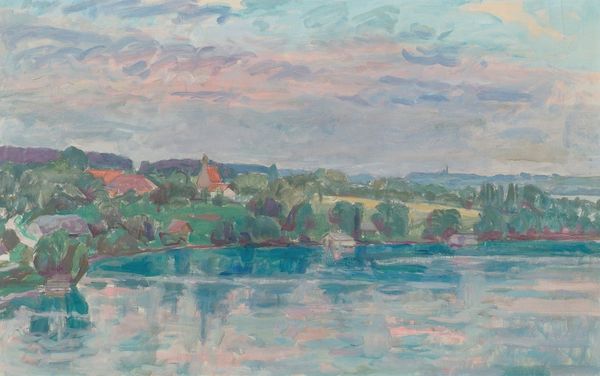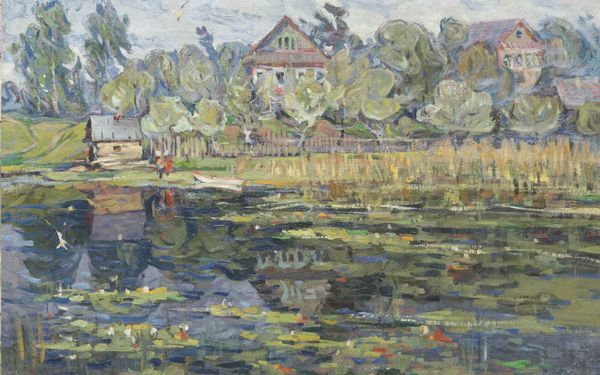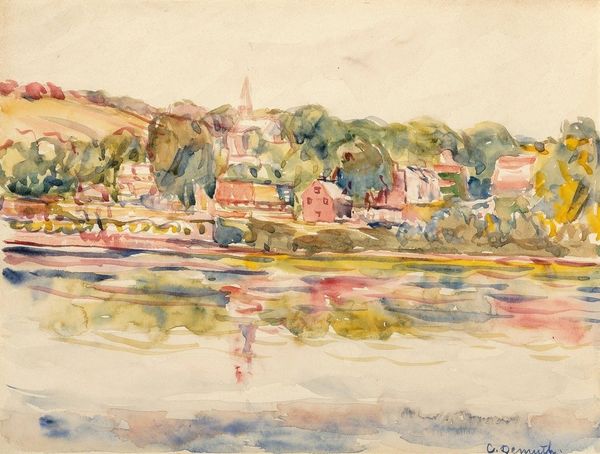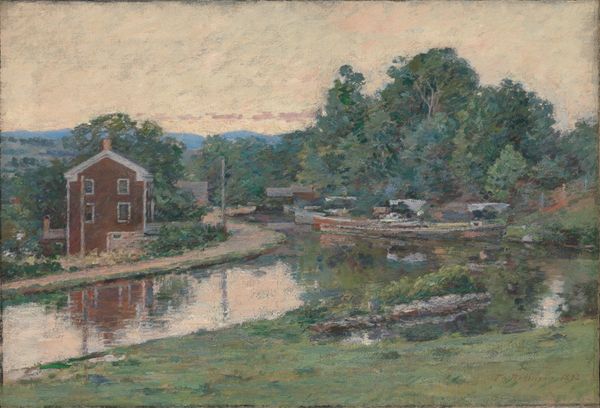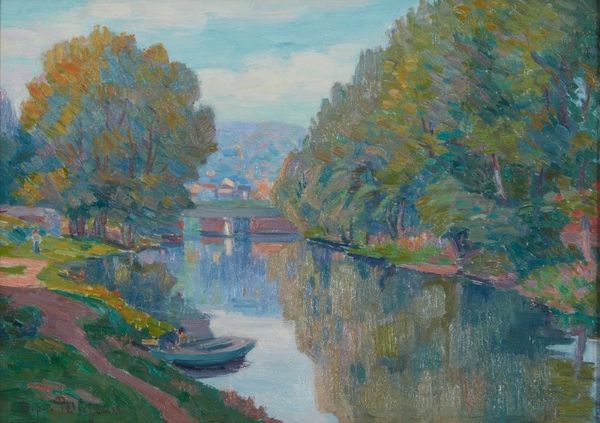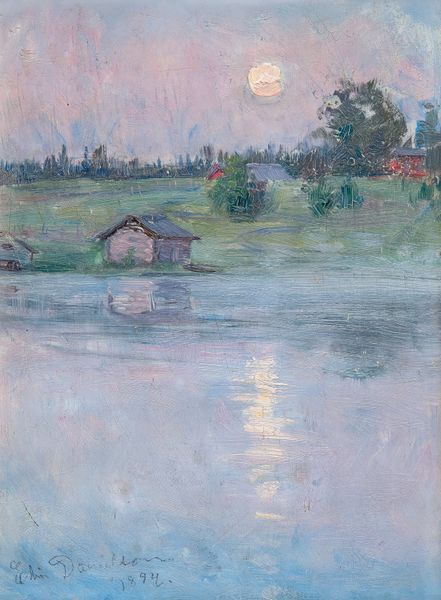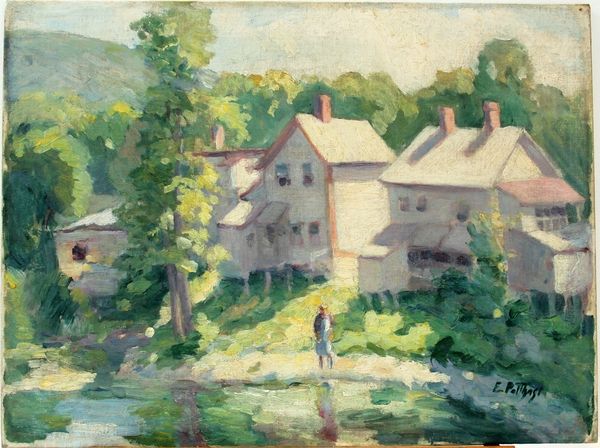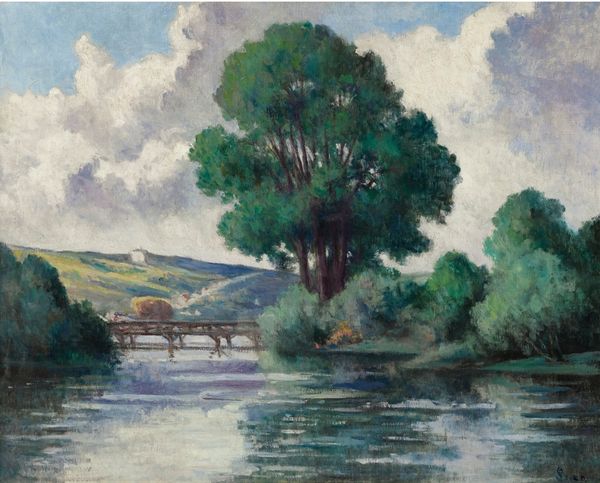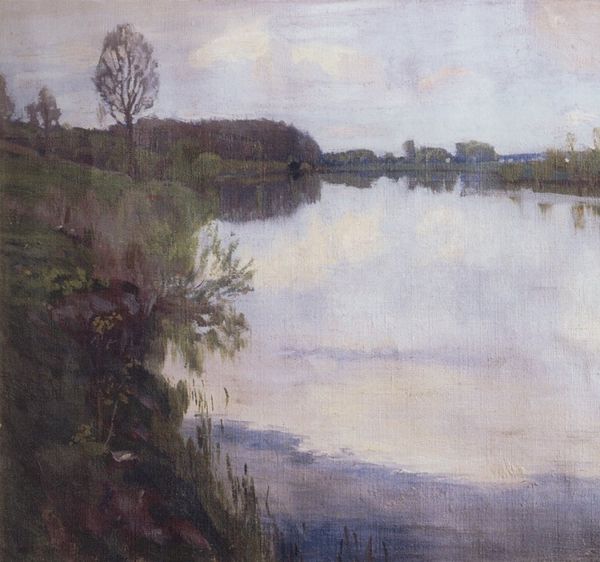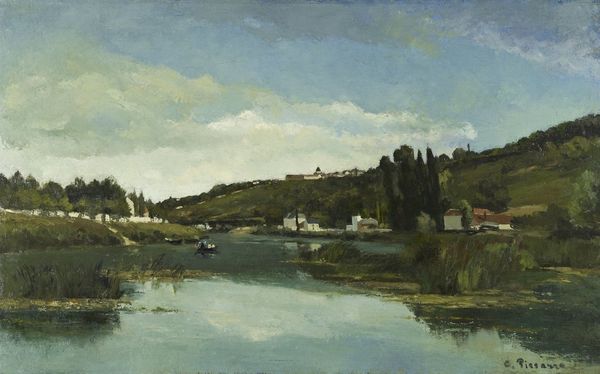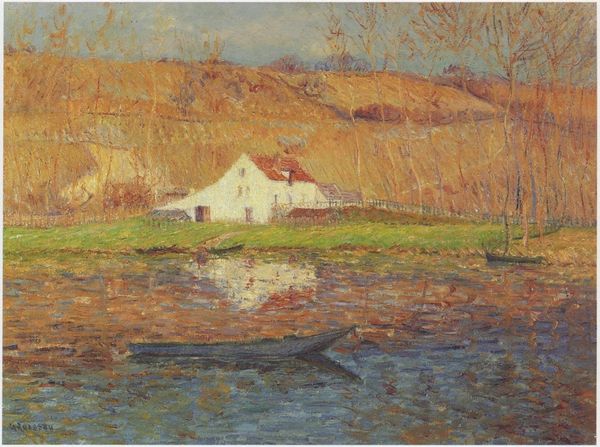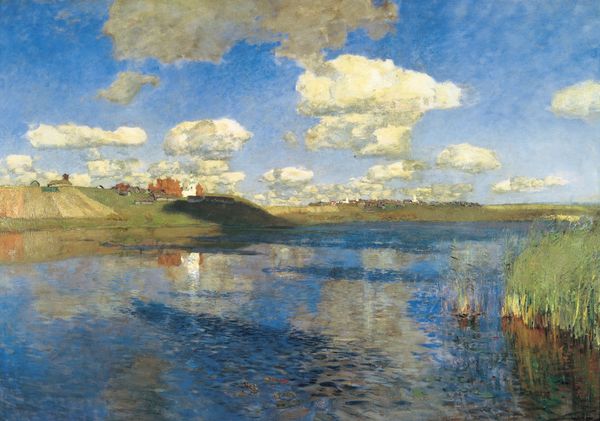
painting, plein-air, oil-paint
#
painting
#
impressionism
#
plein-air
#
oil-paint
#
landscape
#
impressionist landscape
#
oil painting
Copyright: Public domain
Curator: Welcome. We’re standing before "Fra Sandvikselven," an oil painting from 1890 by Norwegian artist Harriet Backer. Editor: My first impression is one of serene calm. The gentle reflections in the water, the muted colors...it evokes a feeling of peaceful isolation. Curator: Indeed. Backer was deeply involved with Impressionism, and here you can really see her manipulation of light and shadow. The loose brushstrokes work to create this hazy, almost dreamlike atmosphere. Note the structure, how the composition is largely divided into thirds: sky, land, water. This classical structure gives stability, which offsets the ephemerality of light, rendering stillness and immanence, if I may say so. Editor: I appreciate that attention to stillness, but I also see how Backer subtly captures a turning point in Norwegian society. This work was painted at a time when industrialization and urbanization were beginning to encroach upon traditional rural life. Consider this humble wooden structure with a simple boat tied to the shore. I believe this image reflects nostalgia for the tranquility of pre-industrial existence and even offers a counterpoint to narratives of relentless progress. Curator: An intriguing point. Certainly, the setting's simple forms and composition resonate with a grounded sensibility. Yet, I cannot help but find something almost modernist in its reduction of natural forms. Observe, in the center, Backer flattens perspective to create a subtle interplay of shapes and tones in both natural and built features of the landscape, thus blurring foreground and background into abstraction. Editor: The very choice of an everyday scene—a simple house and the adjacent waterway—speaks volumes, even with the flattening that you describe. I think this choice serves to democratize representation by bringing beauty into ordinary spaces. By turning the banal into the artistic, Backer acknowledges the beauty of the mundane in working-class, rural experiences and thus also celebrates a wider vision of her nation’s story. Curator: The way Backer harmonizes hues to elicit emotion shows an elegant touch. I find something in the formal mastery alone that makes Backer one of the pioneers in early Norwegian modernism. Editor: And seeing beyond the surface, one is invited to consider how Norway's shift to modernity affects the intimate relationships people form with place and tradition. Curator: Thank you for such an enlightening perspective. Editor: Indeed, an artwork so rich in visual cues surely gives one much to consider.
Comments
No comments
Be the first to comment and join the conversation on the ultimate creative platform.
